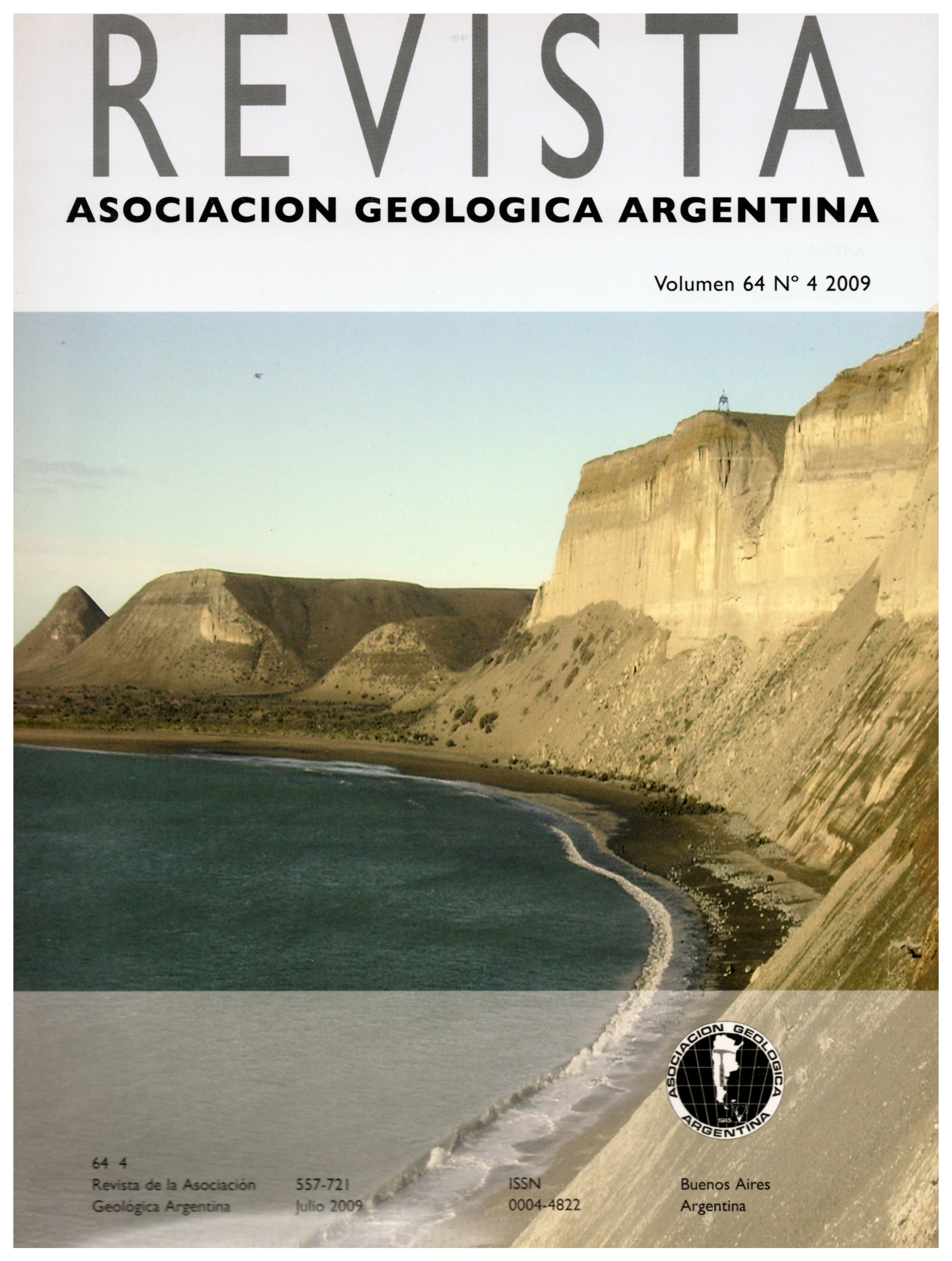Genetic model of the Vegas Peladas Fe-skarns, Mendoza, Argentina
Main Article Content
Abstract
Based on fluid inclusions (FI) studies, theFe skarn as- -sociated with the diorite pluton in Vegas Peladas formedat 3,5 km depth, under lithostatic pressure of 950 bars, at expenses of highsalinity (up to 70 wt. % NaCl eq.) - high temperature fluids (670°-400°C). These NaCl ± KCl ± FeCln ± hematite rich fluids along with vapour may have been formed by the immiscibility of low salinity (6-8 wt. % NaCl eq.) magmatic fluids. The isotopic data of the water in equilibrium with garnet (δ18O7.2-8.5‰) and with magnetite (4.8-7.9‰) confirm the magmatic origin for these early fluids. During the interaction with the wall rocks and the formation of the prograde exoskarn, fluids decreased isobarically their temperatures (up to ~250°C). The continum volatile exsolution from the magmaand sealing of conducts by the precipitation of silicates generated overpressures, consequent fracturing of the exoskarn, and boiling of the fluids. Under hydrostatic pressures, the increase of permeability allowed theinfiltration of external fluids (formations water± meteoric water?) to the hydrothermal system, their mixing with the magmatic fluids and cooling, promoting early silicate mineral instability and their replacement by hydrous minerals, quartz (with δ18O values -0.55 a 4.5‰) and the massive precipitation of most iron oxides. The FI record indicates fluids with lower salinities (41.6-23 wt. % NaCl eq), temperatures between 420° and 320°C, and hydrostatic pressure of 325 to 125 bars for this stage. The decrease intemperature and salinity were the main factors that favoured the iron ore precipitation. FI in calcite from later veins that cut all the prograde and retrograde assemblages indicate fluids with the lowest temperatures (165-315°C) and salinities (8.4 y 13.5 wt. % NaCl eq.). The δ18O values for the water in equilibrium with this epidote (-4.66 a 0.19‰) and calcite (-3.9 a 2.68 ‰), suggest mixing and dilution of previous fluids with meteoric water (with a dominance ofthe later) during cooling and collapse of the hydrothermal system. The intrusion of the granite pluton increased the temperature of the previous skarn (>550°C) and generated saline fluids and vapour by immiscibility that caused dissolution of Fe from previous skarn. These brines carried Fe insolution and, when cooled, precipitated it as iron oxides along with the new skarn minerals around the granite.
Article Details

This work is licensed under a Creative Commons Attribution-NonCommercial 4.0 International License.
Nota de copyright
Los autores conservan los derechos de autor y garantizan a la revista el derecho de ser la primera publicación del trabajo licenciado según una licencia de atribución Creative Commons que permite a otros compartir el trabajo con el reconocimiento de la autoría y de la publicación en la que se publicó por primera vez.
Declaración de privacidad
Los nombres y direcciones de correo electrónico introducidos en esta revista se usarán exclusivamente para los fines declarados por esta revista y no estarán disponibles para ningún otro propósito u otra persona.

